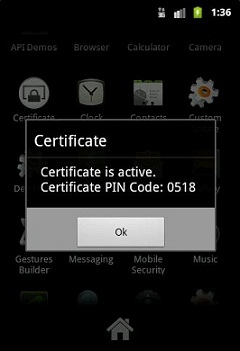Microsoft Security Bulletin Coverage (June 12, 2013)
Dell SonicWALL has analyzed and addressed Microsoft’s security advisories for the month of June, 2013. A list of issues reported, along with Dell SonicWALL coverage information follows:
MS13-047 Cumulative Security Update for Internet Explorer (2838727)
- CVE-2013-3110 Internet Explorer Memory Corruption Vulnerability
IPS: 9929 “Windows IE Use-After-Free Vulnerability (MS13-047) 1” - CVE-2013-3111 Internet Explorer Memory Corruption Vulnerability
IPS: 9930 “Windows IE Use-After-Free Vulnerability (MS13-047) 2” - CVE-2013-3112 Internet Explorer Memory Corruption Vulnerability
IPS: 9935 “Windows IE Use-After-Free Vulnerability (MS13-047) 3” - CVE-2013-3113 Internet Explorer Memory Corruption Vulnerability
There are no known exploits in the wild. - CVE-2013-3114 Internet Explorer Memory Corruption Vulnerability
IPS: 9938 “Windows IE Use-After-Free Vulnerability (MS13-047) 4” - CVE-2013-3116 Internet Explorer Memory Corruption Vulnerability
IPS: “Windows IE Use-After-Free Vulnerability (MS13-047) 5” - CVE-2013-3117 Internet Explorer Memory Corruption Vulnerability
IPS: 9940 “Windows IE Use-After-Free Vulnerability (MS13-047) 6” - CVE-2013-3118 Internet Explorer Memory Corruption Vulnerability
IPS: 9941 “Windows IE Use-After-Free Vulnerability (MS13-047) 7” - CVE-2013-3119 Internet Explorer Memory Corruption Vulnerability
IPS: 9942 “Windows IE Use-After-Free Vulnerability (MS13-047) 8” - CVE-2013-3120 JSON Array Information Disclosure Vulnerability
IPS: 9936 “Internet Explorer Memory Corruption Vulnerability” - CVE-2013-3121 Internet Explorer Memory Corruption Vulnerability
IPS: 9937 “Windows IE 9 DOM SetExpression Memory Corruption” - CVE-2013-3122 Internet Explorer Memory Corruption Vulnerability
IPS: 9943 “Windows IE Memory Corruption Vulnerability (MS13-047)” - CVE-2013-3123 Internet Explorer Memory Corruption Vulnerability
IPS: 9609 “DOM Object Use-After-Free Attack 3” - CVE-2013-3124 Internet Explorer Memory Corruption Vulnerability
IPS: 9931 “Windows IE DOM Object Memory Corruption 1” - CVE-2013-3125 Internet Explorer Memory Corruption Vulnerability
IPS: 9932 “Windows IE DOM Object Memory Corruption 2” - CVE-2013-3139 Internet Explorer Memory Corruption Vulnerability
IPS: 9933 “Windows IE DOM Object Memory Corruption 3” - CVE-2013-3141 Internet Explorer Memory Corruption Vulnerability
There are no known exploits in the wild. - CVE-2013-3142 Internet Explorer Memory Corruption Vulnerability
IPS: 9934 “Windows IE DOM Object Use-After-Free 8” - CVE-2013-3126 Internet Explorer Script Debug Vulnerability
There are no known exploits in the wild.
MS13-048 Vulnerability in Windows Kernel Could Allow Information Disclosure (2839229)
- CVE-2013-3136 Windows Kernel Information Disclosure
Not feasible to detect.
MS13-049 Vulnerability in Kernel-Mode Driver Could Allow Denial of Service (2845690)
- CVE-2013-3138 TCP/IP kernel-mode driver Denial of Service Vulnerability
Not feasible to detect.
MS13-050 Vulnerability in Windows Print Spooler Components Could Allow Elevation of Privilege (2839894)
- CVE-2013-1339 Microsoft Windows Print Spooler Elevation of Privilege Vulnerability
It’s elevation of privilege, not feasible to detect.
MS13-051 Vulnerability in Microsoft Office Could Allow Remote Code Execution (2839571)
- CVE-2013-1331 Microsoft Office Buffer Overflow Vulnerability
GAV: 18622 “Malformed.png.MP.1”





















